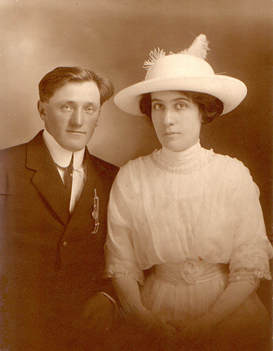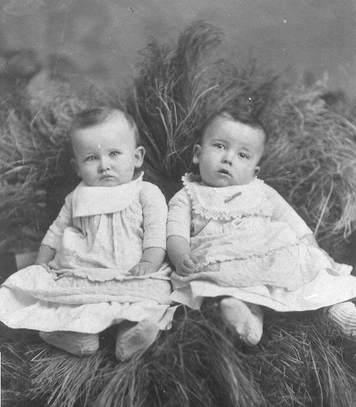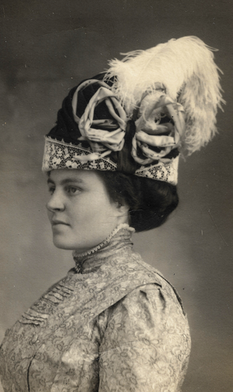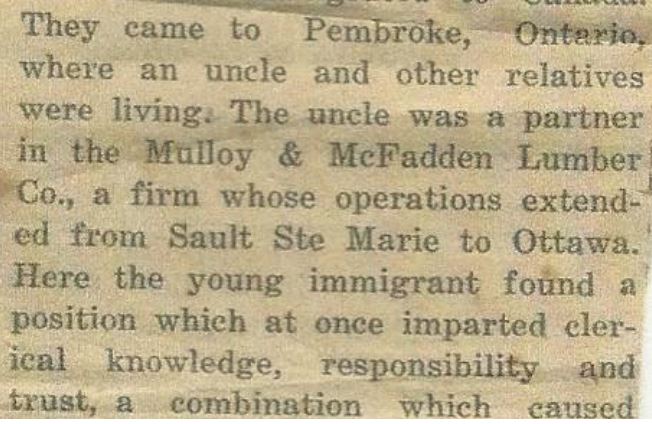|
In the past couple of weeks, we’ve talked about transcribing records. Have you started to transcribe any? With records in foreign languages (to us) and/or old script it can be challenging. It takes persistence, garnering a word or phrase at a time. Sometimes we just need to step away and revisit with fresh eyes. That’s what I’d like to talk about today—the importance of revisiting information. Let’s look at the benefits and examples. Last week I talked about looking for better copies of a record. Early scans and images may not have been as crisp as they are now in the digital age. It’s always a great practice to step back and review the data that you’ve collected. Perhaps you discovered great-grandpa’s obituary among family documents when you first started researching your family history. When you initially begin family history research, you eagerly look for names and dates (birth, marriage, death). Information is happily gathered and entered it into our family tree and then move on to the next document. You may have vaguely remembered that great-grandpa spent time in Canada with relatives prior to coming to the United States. Interesting but you were focused on getting further back in your family tree, not writing a family story. As you start to think about how to tell your family story, it is the ideal time to start re-reading and reviewing the information that you gathered for your family history. In the example given above, it certainly would be more interesting to the read to know that great-grandpa worked in various places in Canada before homesteading in the states. And perhaps there are ties in Canada that would give more information about his home country and relatives. Let’s look more closely at this example. I have a relative who traveled from Ireland to Canada in the late 1800s. His obituary told me more than the dates between the dash on his tombstone. It told me the actual town in Ireland he came from, the journey that he took to Canada and how he homesteaded in North Dakota. Here’s an excerpt: I had used this information to write in my family history book many years ago and to connect with my relatives who remained in Ireland. However, I haven’t looked at this information for quite some time. After rereading the obituary, I decided to do some additional digging online. As more data is available online, we can discover more clues and information.
Here are the questions I asked myself:
Results I found an article about the history of lumber work in the Blind River region. In the article it specifically called out the very company my relative worked for and there is more history about the region as well as competing companies. This is something that I didn’t find when researching several years ago. Here’s an excerpt from “Blind River Recalls Days of the World’s Biggest White-Pine Mill, 1977” from the Blind River Collection at images.ourontario.ca. Into the North Channel area at about, the same time came two men from Renfrew. James Joseph McFadden and John Malloy. They had bought an operation in Spragge, 17 miles east of Blind River. In 1918 the McFadden and Malloy Lumber Co. bought the Eddy mill in Blind River. Mr. Malloy died in 1924 and the name was changed to McFadden Lumber Co. Two years later the firm was sold to the Carpenter- Hixon Lumber Co. of Minneapolis "It was the Carpenter company in 1927 that built that mill into the largest east of the Rockies and not McFadden," Mr. Kauffmann says. Regarding my second question: We often think of our relatives as heading into the unknown with no contacts or family once they reached America. It is far more likely that they knew someone or had employment lined up. I’m still in the early stages of discovering more about the potential relatives related to the McFadden and Malloy Lumber Co. but have found a few hits to explore. Some of the names that are coming up with ties back to the same village as my ancestor make me hopeful that I’ll soon make a connection. The point of this week’s blog was not to regale you with stories of my relatives...as interesting as they may be to me! My hope is that this example will encourage you to pick up a document that you haven’t reviewed recently and tease out additional clues and ideas for filling in gaps in your family story. It may lead you down a new research path or you may find that the answers you were looking for were there all along. Good luck! “I believe that the more you know about the past, the better you are prepared for the future.” --Theodore Roosevelt
0 Comments
Leave a Reply. |
AuthorWith a lifelong passion for genealogy and history, the author enjoys the opportunity to share genealogy tidbits, inspiring others to research and write their family story. Archives
July 2024
Categories |





 RSS Feed
RSS Feed